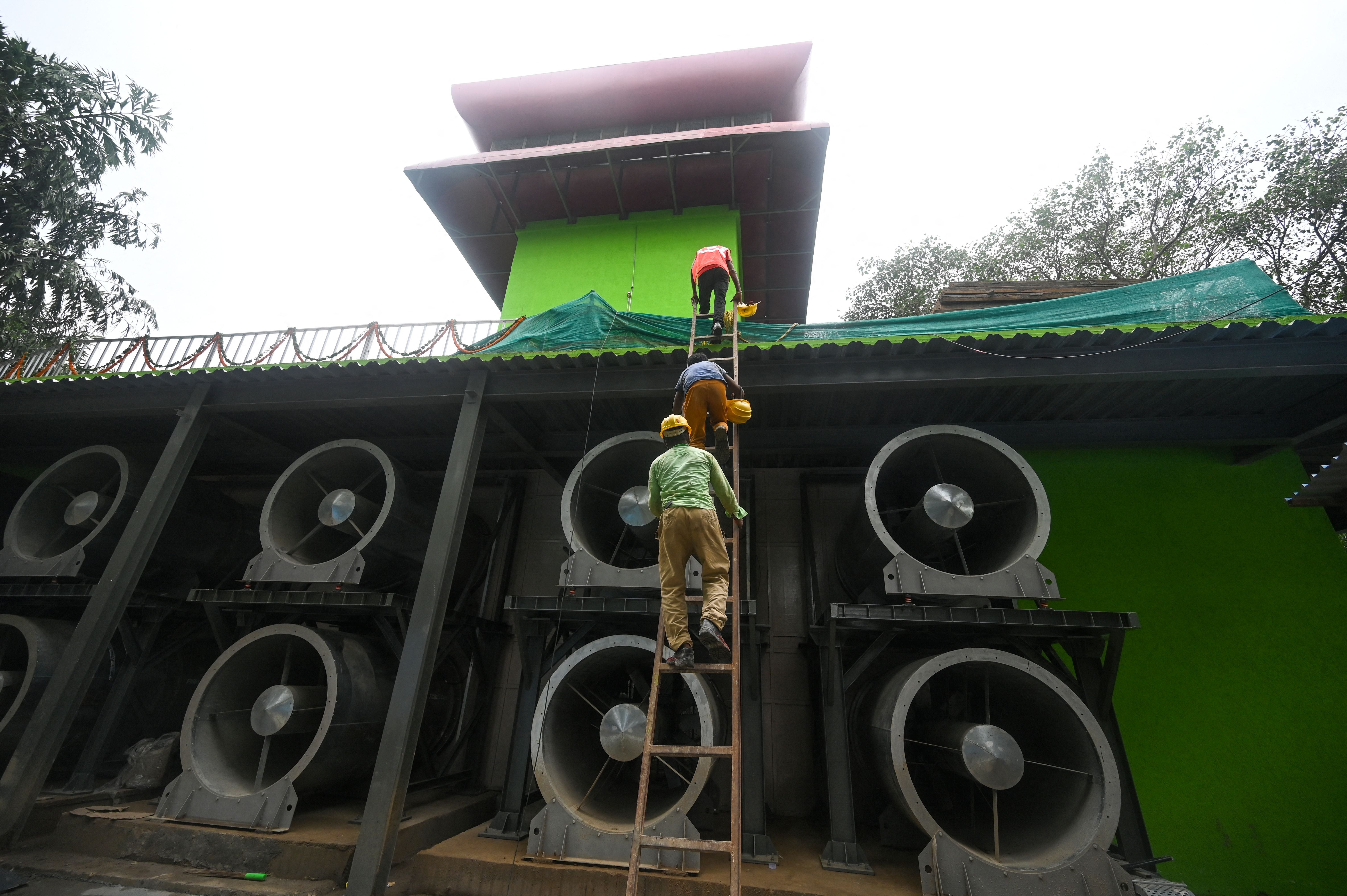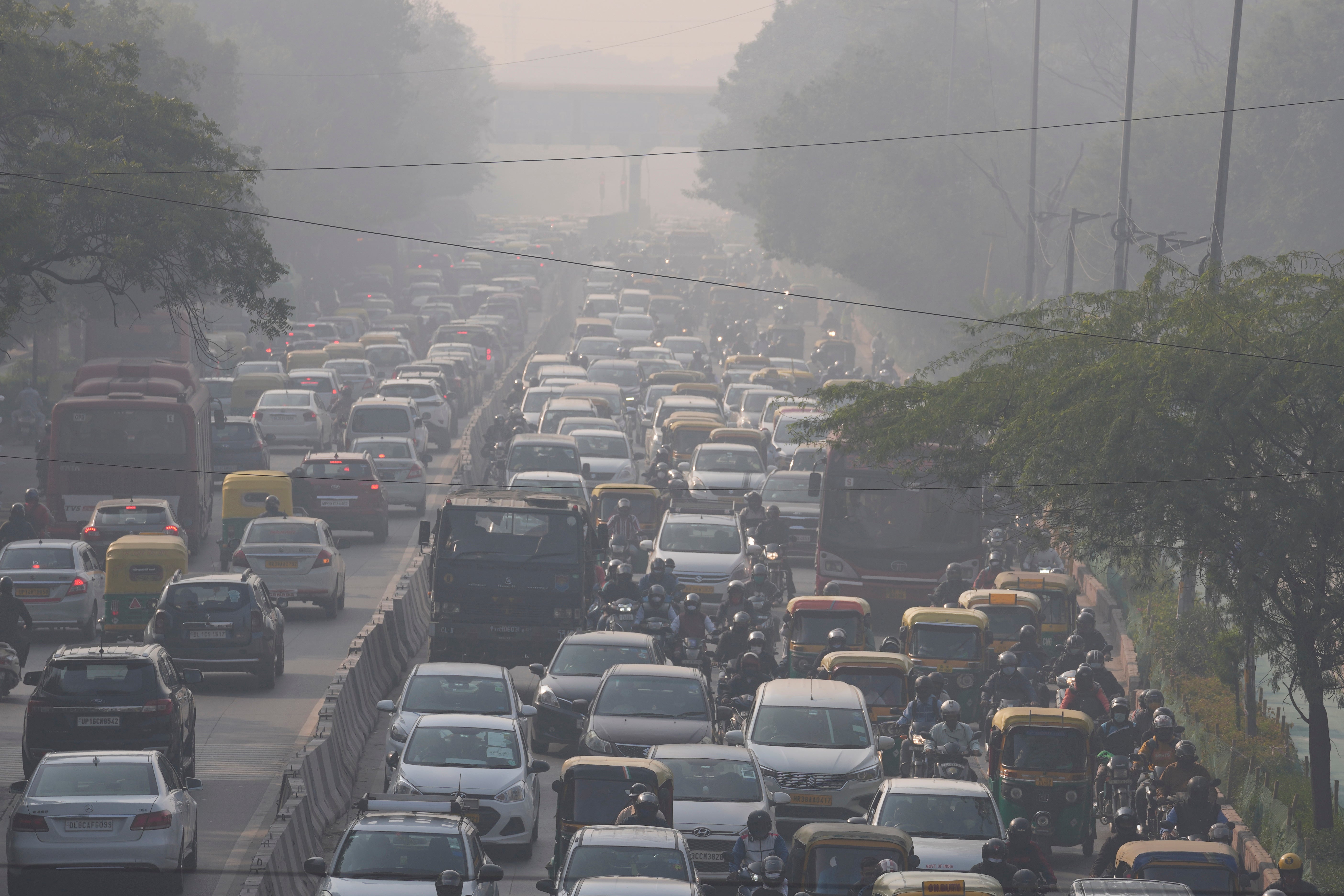Why Delhi’s smog towers are an ‘unscientific’ answer to air pollution in India
Last-minute emergency measures and unscientific planning will not solve India’s annual toxic smog phenomenon, reports Stuti Mishra in Delhi


Every year in November, India’s northern cities are engulfed by a toxic brown haze that forces schools and workplaces to shut and leaves millions of people gasping for breath.
And each year, the government’s response is as predictable as the recurring phenomenon.
This involves last-minute measures, including lockdowns and stay-at-home orders. This year, however, the government of Delhi – the world’s most polluted capital – is depending on one more tactic to combat the worsening air pollution: newly built anti-smog towers in the city.
The grand project was started after a reprimand by the Supreme Court last year over the government’s inaction to address poor air quality. Two towers were set up at a cost of more than Rs20 crore (£2m) each: one in Delhi’s central Connaught Place, built by the city’s Aam Aadmi Party government, and the other in the eastern locality of Anand Vihar, constructed by the central government led by Narendra Modi.
Both anti-smog towers were up and running in time for this year’s winter months. Delhi’s environment minister, Gopal Rai, recently said that the towers were able to clean up the air within a 1km radius. Delhi’s chief minister, Arvind Kejriwal, claimed that the towers would clean air at a rate of around 1,000m3 per second.
The government calls it an experimental project, and if it is successful, Delhi is set to get more smog towers across the city. On the face of it, this might seem like a viable step – tall towers in the city, sucking up pollution and pushing out clean air like a water purifier.
However, there is no scientific evidence so far to back up the claims of the Delhi government that smog towers are capable of sucking out pollutants from the air. In fact, experts have told The Independent that cleaning up air in this manner might not be possible using current technology.
“There are no publicly available updates on what the performance of the smog tower is, barring periodic claims about its efficiency and range over which it is effective,” said Karthik Ganesan, a fellow and director of research coordination at the Council on Energy, Environment and Water (CEEW), a Delhi-based policy research institute.
The government has said that a study will be carried out later on how effective the towers have been. However, the air-quality data shows little evidence of any change to date in the areas in which the towers are situated.
The readings taken in these areas during the current smog phase show the PM2.5 levels to be as hazardous as the city’s overall levels. The safe limits for PM2.5 and PM10 – the small, hazardous particles that contribute to smog – are 60mcg/m3 and 100mcg/m3 respectively. But Delhi’s PM2.5 levels have been above 500mcg/m3 in its worse phase, and so have the readings around Connaught Place, where the first anti-smog tower began operating earlier this year.

The World Health Organisation (WHO) considers a figure between zero and 50 to be “good”, while a level between 300 and 500 is considered “hazardous”.
“There must be a robust monitoring of the impact in the vicinity, and the costs of operating it,” Mr Ganesan added. “If it is found to be ineffective, we must cease operations immediately, as there is no point spending further public resources on this technology. The components can be repurposed for industrial use, and at least we can gain some salvage value.”
Aarti Khosla, the director of Delhi-based strategic communications initiative Climate Trends, questioned the logic behind the technology used in the anti-smog towers.
“Smog towers work on the principle of HEPA filtration, like indoor air purifiers, where the air which flows through the filter gets purified, coming out of the top or bottom of the smog tower,” Ms Khosla told The Independent. “As a concept, it is scientifically well established and is used widely for cleaning indoor environments, but applying the same principle to the scale of a city as a solution is absurd.”
According to Ajay Nagpure, World Resources Institute (WRI) India’s chief of air quality, the city’s use of anti-smog towers is “unrealistic and unscientific”.
“Even if you look at the capacity of the smog tower, it is 1000m3 per second. We will need hundreds or thousands of smog towers to clean Delhi’s air,” Mr Nagpure said. “Air quality is very dynamic. Various variables are involved in determining it. To evaluate the performance of any kind of these technologies is very difficult.”
If the city requires hundreds of costly towers for every 1km radius, questions arise over whether public money should fund a technology that remains unproven.
Quick-fix solutions like smog towers, despite the lack of scientific data, may have appealed to the government, given the difficulty of stamping out pollution at its source.
Bureaucratic limitations and administrative boundaries play a role in restricting government anti-pollution efforts, especially in the case of Delhi, which is located between three agricultural states. One of these states, Punjab, often takes the most blame for exacerbating the pollution crisis with its seasonal practice of stubble-burning.

However, Delhi’s year-round pollution is also at worrying levels. While stubble-burning, or setting off firecrackers during the Hindu festival of Diwali, can be seen to play a role in worsening the air quality, experts say the city has other sources of pollution that are often overlooked.
“Stubble-burning is an episodic event which leads to an acute spike in air pollution for a period of three to four weeks in October and November,” Mr Ganesan said. “During the burning phase, its contribution ranges between 20 per cent and 50 per cent of the pollution load in the NCR (National Capital) region.”
According to Ms Khosla, the share of pollution caused by stubble-burning later reduces to around 3 per cent before it completely phases out. However, the pollution sources in the city remain constant.
“There are other, year-round sources of pollution. These cause maximum round-the-clock pollution and are the ones to tackle for any long-term improvement,” she said. “Industries, transport emissions, waste-burning, construction and demolition waste are all other sources which need significant, fierce attention.”
While several factors, including stubble-burning, contribute to an increase in hazardous PM2.5 levels in Delhi and its surrounding areas, experts say identifying all major drivers of pollution and curbing emissions at the source is the only way to bring the northern cities out of a health emergency.
“Retiring old and polluting power plants. Managing emission from industries, hand-holding the MSME (Micro, Small & Medium Enterprises) sector so they can shift to better fuels are some of the ways,” Ms Khosla said. “Overall, improving quality and adequacy of public transport, so that the bulk of movement is through good-quality public transport, will bring massive gains for a visibly good city life as well.”
According to Mr Nagpure, the city needs to engage in micro-level strategies to combat air pollution.
“We need to identify the air-pollution sources at different administrative boundary levels. After that, we need to develop the strategy and assign the responsibility to people who are working in those boundaries.”
The micro-level strategies that experts are demanding in Delhi have already been deployed in China, which has sought to tackle high air-pollution levels in its capital Beijing.
However, the smog towers used in Delhi failed in a series of air-cleaning tests in Beijing in 2016. The tower in Beijing was supposed to purify 30,000m3 of air every hour, collecting over 75 per cent of PM2.5 and PM10.
It was found to be ineffective at dealing with the city’s pollution. Beijing, however, did manage to curb its pollution levels by turning to micro-level strategies.
A report in 2019 by the United Nations Environment Programme and the Beijing Municipal Ecology and Environment Bureau outlined how Beijing’s air-quality management programme had evolved over the past quarter-century.
It said the improvements were the result of massive investments in every polluting sector. Before the 21st century, air pollution in Beijing was dominated by coal combustion and motor vehicles. Beijing implemented a series of measures focused on energy infrastructure optimisation, coal-fired pollution control, and vehicle emission controls.
The answer to Beijing’s air pollution was straightforward, if not simple – it acted on the main sources of pollution over several years. Delhi now needs to do the same.



Join our commenting forum
Join thought-provoking conversations, follow other Independent readers and see their replies
Comments